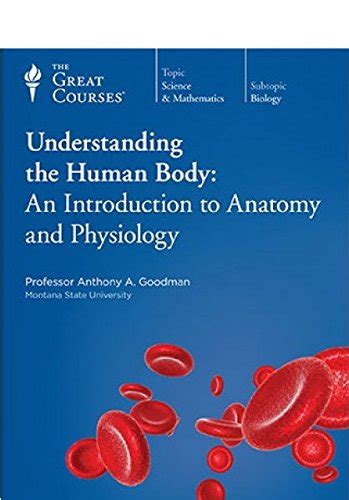Are you fascinated by the intricacies of the human body? Do you have a strong interest in understanding how the body works on a physiological level? If so, then a career in anatomy and physiology may be the perfect fit for you. In this blog post, we will delve into the world of anatomy and physiology programs at US universities. From exploring the basics of the field to discussing the various types of programs available, we will provide an in-depth look at what it takes to succeed in this dynamic and challenging field. Whether you are considering a career in healthcare, research, or academia, understanding the human body is essential. Join us as we navigate through the various aspects of anatomy and physiology programs, and offer valuable advice for success in this rewarding field.
Table of Contents
Anatomy and physiology: Exploring the basics
Anatomy and physiology are the foundation of medical science, providing the essential knowledge of the structure and function of the human body. These disciplines are crucial for anyone pursuing a career in healthcare, as they form the basis for understanding how the body works and how diseases develop.
Studying anatomy allows you to delve into the intricate details of the body’s organs, tissues, and cells, while physiology focuses on the mechanisms that keep the body functioning. The two fields are closely interconnected, and a comprehensive understanding of both is essential for healthcare professionals.
Whether you are aiming to become a doctor, nurse, physical therapist, or any other healthcare professional, a solid grasp of anatomy and physiology is essential. Even for those not directly involved in patient care, such as medical researchers or educators, a foundational knowledge of these subjects is invaluable.
By exploring the basics of anatomy and physiology, students can gain a deeper understanding of the human body and the intricate processes that keep it running smoothly. This knowledge forms the basis for further study and eventual application in real-world medical practices.
Why study anatomy and physiology?
Studying anatomy and physiology is essential for anyone interested in pursuing a career in the medical field. Understanding the structure and function of the human body is the basis for all medical knowledge and practice. The knowledge gained through studying anatomy and physiology provides the foundation for diagnosing and treating patients in various healthcare settings.
Furthermore, studying anatomy and physiology can lead to a deeper appreciation and understanding of the complexity of the human body. It can provide insights into how the body functions as a whole, and the interconnectedness of its various systems and structures. This deeper understanding can foster a greater sense of empathy and compassion for patients, as well as a desire to contribute to the advancement of medical science.
Moreover, a background in anatomy and physiology can open up a wide range of career opportunities. Graduates with expertise in anatomy and physiology are in high demand in fields such as healthcare, research, education, and medical technology. The knowledge and skills gained from studying anatomy and physiology can also serve as a strong foundation for further specialization in fields such as medicine, physical therapy, and occupational therapy.
Ultimately, studying anatomy and physiology is not only intellectually stimulating but also carries great practical significance. It can lead to a fulfilling and rewarding career, as well as contribute to the betterment of healthcare and medical knowledge as a whole.
Types of anatomy and physiology programs
When it comes to pursuing an education in anatomy and physiology, there are various program options available for students. Associate’s degree programs typically provide a foundation in the principles of anatomy and physiology, preparing students for entry-level positions in healthcare or further study in the field. These programs often include coursework in human biology, medical terminology, and anatomy lab experiences.
At the bachelor’s degree level, students can delve deeper into the intricacies of the human body through comprehensive anatomy and physiology programs. These programs may offer more specialized coursework in areas such as neuroanatomy, histology, and pathophysiology, preparing students for careers in research, education, or healthcare.
For those seeking advanced study options, master’s degree programs in anatomy and physiology can provide an in-depth exploration of the subject matter. Students may have the opportunity to conduct original research, engage in clinical experiences, or specialize in areas such as anatomical education or biomedical sciences.
Finally, doctoral programs in anatomy and physiology are designed for individuals interested in pursuing careers in academia, research, or advanced clinical practice. These programs often involve an intensive research component, culminating in a dissertation or thesis project that contributes to the existing body of knowledge in the field.
Choosing the right US university program
When it comes to choosing the right US university program for anatomy and physiology, there are a few key factors to consider. One of the first things to take into account is the curriculum offered by the program. It is important to look for a program that provides a comprehensive understanding of both anatomy and physiology, with a balance between theoretical knowledge and practical application.
Another important factor to consider is the faculty or instructors within the program. Look for universities that have experienced and knowledgeable professors who are actively engaged in research and have real-world experience in the field. The expertise and guidance of the faculty can greatly impact the quality of education you receive.
Furthermore, it is crucial to consider the resources and facilities available at the university. This includes anatomy and physiology labs, research facilities, and access to medical libraries. A program with state-of-the-art equipment and resources can provide a more immersive and hands-on learning experience.
Lastly, take into account the career opportunities and industry connections that the program offers. Look for universities that have strong relationships with healthcare institutions, research organizations, and other relevant industries. These connections can provide valuable networking opportunities and potential job placements upon graduation.
Curriculum highlights: Anatomy and physiology courses
When considering a program in anatomy and physiology, it’s important to understand the curriculum highlights that will shape your education. These courses provide the foundational knowledge and skills necessary for a successful career in the field.
One of the key highlights of anatomy and physiology programs is the focus on in-depth study of the human body, including its structure and function. Courses may cover topics such as human biology, cellular biology, and genetics, providing a comprehensive understanding of the body at the molecular and cellular levels.
Another highlight of these programs is the emphasis on hands-on learning experiences, including laboratory work and dissections. This practical component allows students to apply their theoretical knowledge in a real-world setting, developing essential skills and gaining valuable experience.
Furthermore, anatomy and physiology courses often include interdisciplinary study, integrating concepts from related fields such as chemistry, physics, and healthcare. This holistic approach helps students develop a well-rounded understanding of the human body and its interconnected systems.
Hands-on learning: Anatomy and physiology labs
When it comes to studying anatomy and physiology, hands-on learning in labs is an essential part of the educational experience. In anatomy and physiology labs, students have the opportunity to apply the knowledge they’ve gained in the classroom to real-life situations. This type of experiential learning helps solidify their understanding of the human body and its functions.
One of the key benefits of hands-on learning in anatomy and physiology labs is the chance for students to work directly with human cadavers or other specimens. This allows them to observe and manipulate anatomical structures, gaining a deeper understanding of the body’s inner workings.
In addition to working with specimens, students in anatomy and physiology labs often have access to medical equipment and technology used in diagnostic and treatment settings. This exposure helps them develop practical skills that are valuable for future careers in healthcare or research.
Overall, hands-on learning in anatomy and physiology labs plays a crucial role in preparing students for success in the field. It provides them with a unique opportunity to develop both theoretical knowledge and practical skills, which are essential for anyone pursuing a career in healthcare or related fields.
Career prospects: Jobs in anatomy and physiology
Studying anatomy and physiology can open up a wide range of career opportunities in the healthcare field. Graduates with a strong understanding of anatomy and physiology can pursue careers as medical doctors, nurses, physical therapists, occupational therapists, and medical researchers.
With a degree in anatomy and physiology, individuals may find work in hospitals, clinics, research laboratories, rehabilitation centers, and universities. They may also have the opportunity to work in public health agencies, pharmaceutical companies, or as educators.
Jobs in anatomy and physiology often require a deep understanding of human health, disease, and the intricacies of the human body. Individuals in these roles may work directly with patients to diagnose and treat illnesses, or may be involved in cutting-edge research to advance medical knowledge and technology.
Overall, a degree in anatomy and physiology can provide a solid foundation for a rewarding and impactful career in the healthcare industry.
Graduate opportunities: Advanced study options
After completing a bachelor’s degree in anatomy and physiology, many students choose to pursue advanced study options to further their education and enhance their career prospects. Advanced study options in this field offer students the opportunity to specialize in a particular area of anatomy and physiology, conduct research, and potentially contribute to the advancement of medical science.
One of the most popular advanced study options for graduates with a background in anatomy and physiology is pursuing a master’s degree. A master’s degree program typically allows students to delve deeper into their chosen area of specialization, conduct independent research, and gain valuable hands-on experience through internships or lab work.
Another advanced study option for graduates is to pursue a doctoral degree, such as a Doctor of Philosophy (Ph.D.) in anatomy and physiology. Doctoral programs provide students with the opportunity to pursue in-depth research, contribute to academic literature, and potentially become professors or researchers in the field.
For those interested in a career in healthcare, pursuing advanced study options in anatomy and physiology can also include postgraduate programs such as medical school or other professional degree programs. These programs can lead to careers as physicians, surgeons, or other healthcare professionals.
Top US universities offering anatomy and physiology programs
When it comes to pursuing a degree in anatomy and physiology, it’s important to choose a program that will provide you with a high-quality education and ample opportunities for growth. Fortunately, there are several prestigious universities in the United States that offer outstanding programs in this field.
Harvard University is renowned for its exceptional anatomy and physiology programs, providing students with a comprehensive understanding of the human body and its processes. The university boasts state-of-the-art facilities and a faculty of experienced educators who are dedicated to fostering academic excellence.
Johns Hopkins University is another top-tier institution that offers top-notch anatomy and physiology programs. Students have the chance to engage in cutting-edge research and hands-on experiences that prepare them for successful careers in healthcare, research, and academia.
Other leading universities such as Stanford University, University of Pennsylvania, and University of Michigan also offer exceptional anatomy and physiology programs, each with their own unique strengths and opportunities for students to excel.
Advice for success: Navigating anatomy and physiology programs
When pursuing a degree in anatomy and physiology, it’s important to stay organized and manage your time effectively. The coursework can be rigorous and demanding, so developing strong study habits and time management skills will be essential for success.
Additionally, seeking out academic support resources can be incredibly helpful. Many universities offer tutoring services, study groups, and academic advising to help students navigate their coursework and succeed in their programs. Don’t be afraid to reach out for help when you need it.
Furthermore, staying engaged with the material and finding ways to apply it to real-world situations can enhance your understanding and retention of the subject matter. Look for opportunities to participate in research projects, internships, or volunteer work related to anatomy and physiology to gain practical experience and make the most of your educational experience.
Finally, don’t underestimate the value of networking and building connections within the field of anatomy and physiology. Engaging with professors, professionals, and fellow students can provide valuable insights, mentorship, and potential career opportunities as you navigate your academic program and prepare for the next steps in your career.





